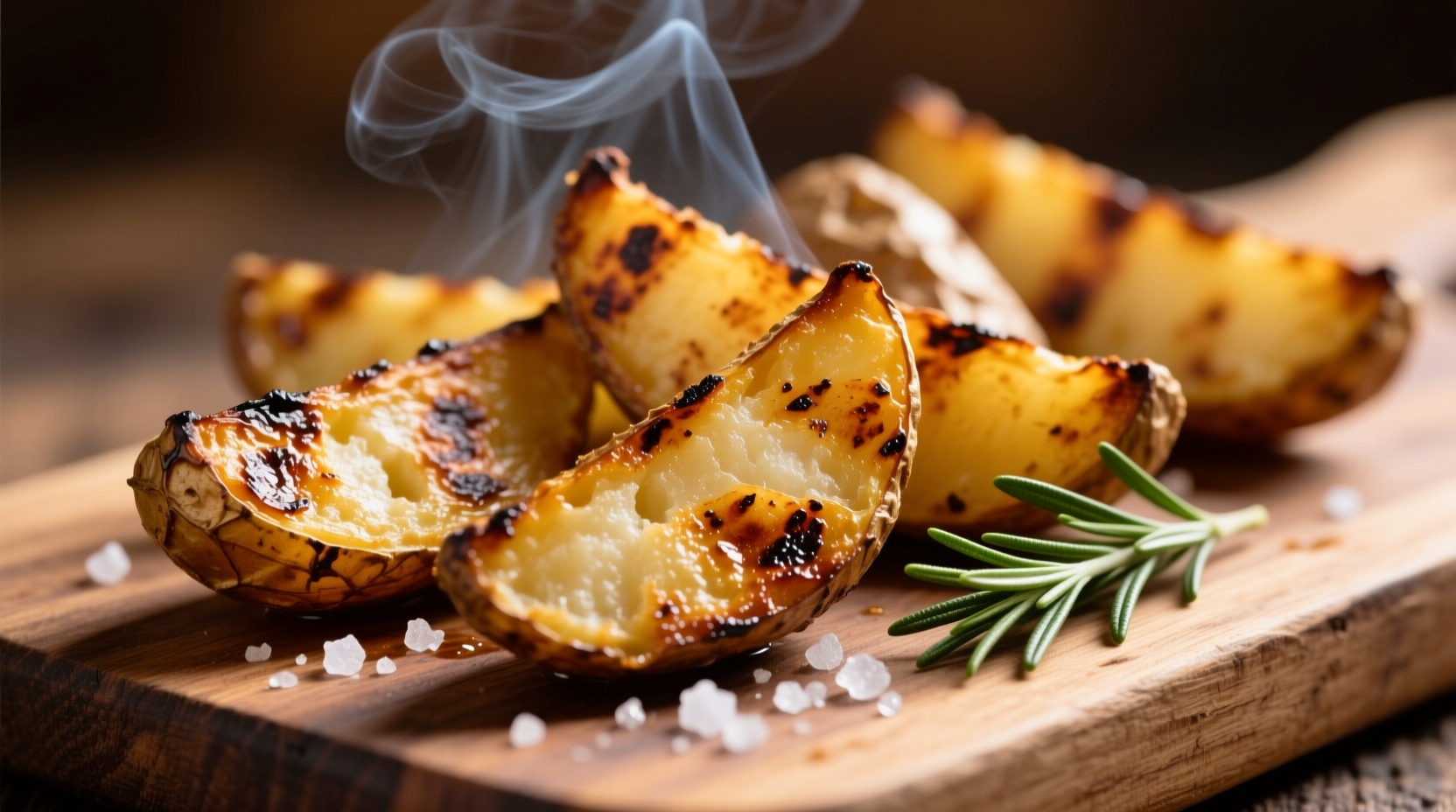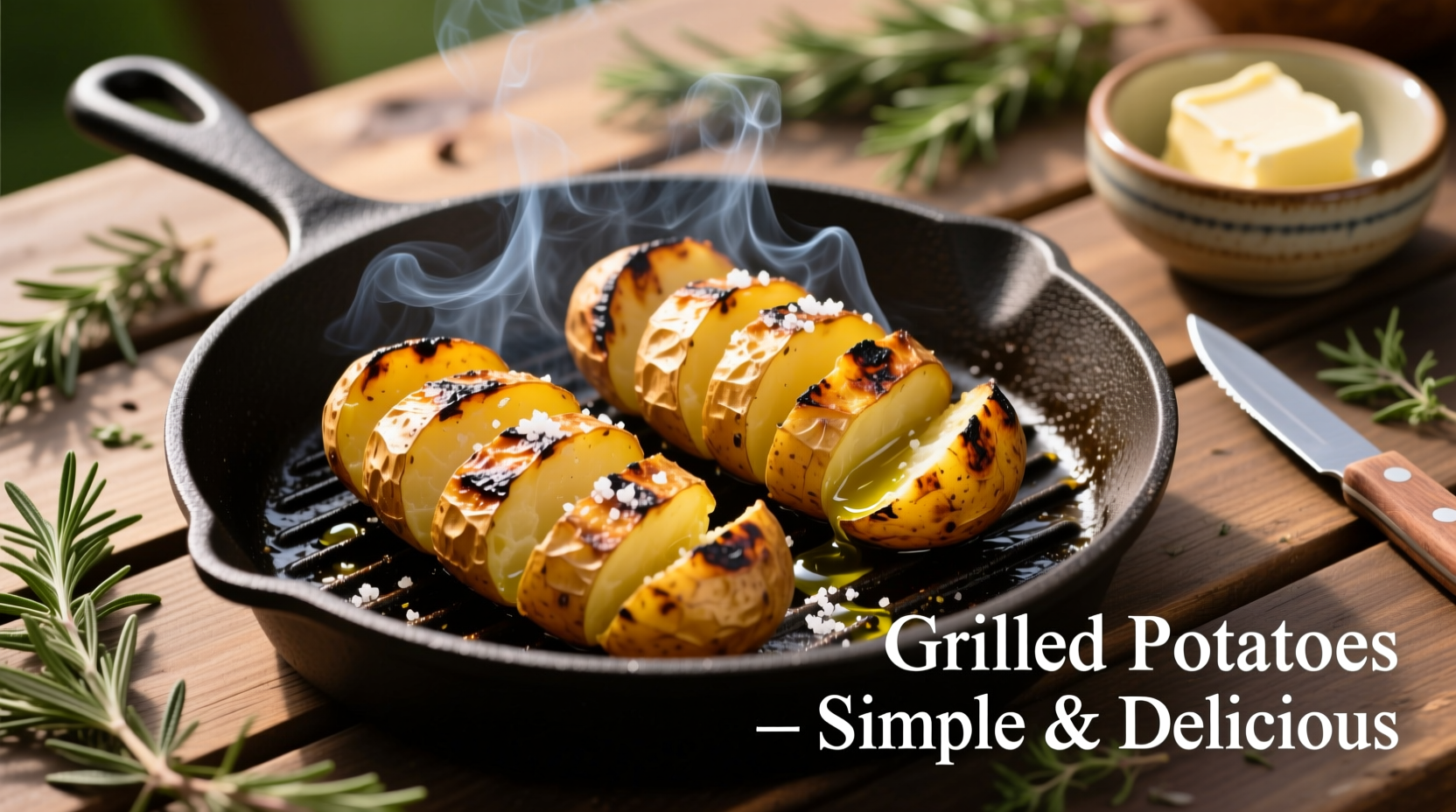Nothing beats the smoky, caramelized flavor of perfectly grilled potatoes. As summer grilling season approaches, mastering this side dish becomes essential for backyard chefs. After testing dozens of methods across professional kitchens and backyard setups, I've refined a foolproof technique that guarantees restaurant-quality results every time.
Why Grilled Potatoes Outperform Other Cooking Methods
Grilling transforms potatoes through direct radiant heat and smoke infusion - elements impossible to replicate indoors. The Maillard reaction creates complex flavor compounds while the grill's radiant heat crisps exteriors without drying interiors. Unlike oven-roasted versions, grilled potatoes develop distinctive char marks that add visual appeal and flavor dimension.
Preparation: The Critical First Step
Skipping proper preparation causes most grilled potato failures. Follow these steps for optimal results:
Choosing the Right Potato Variety
Not all potatoes grill equally. The starch content determines texture outcomes:
| Potato Type | Starch Content | Grilling Result | Best For |
|---|---|---|---|
| Yukon Gold | Medium | Crispy skin, creamy interior | All-purpose grilling |
| Russet | High | Fluffy inside, crunchy outside | Wedges and chunks |
| Red Bliss | Low | Holds shape, moist texture | Skewers and foil packets |
| Sweet Potato | Medium | Caramelized exterior, tender inside | Sweet applications |
Based on USDA agricultural research, Yukon Golds provide the ideal balance of starch and moisture for grilling applications (USDA Agricultural Research Service).
Proper Cutting Technique
Slice potatoes uniformly to 1/2-inch thickness. Thinner slices burn before cooking through; thicker pieces remain raw inside. For wedges, cut from stem to root end to maintain structural integrity during cooking.
The Parboiling Secret
Boil potatoes in salted water for 8-10 minutes until just fork-tender. This partial cooking:
- Prevents exterior charring before interior cooks
- Creates surface starch gelation for better crispness
- Reduces total grill time by 40%
Drain thoroughly and cool slightly before seasoning. Excess moisture causes steaming rather than grilling.

Grill Setup: Temperature Control is Everything
Medium heat (375-400°F) provides the ideal cooking environment. Higher temperatures burn exteriors; lower temperatures dry potatoes without crisping.
Direct vs. Indirect Heat Methods
Two effective approaches work depending on your grill type:
Direct Heat Method (Gas Grills)
- Preheat grill to medium (375-400°F)
- Clean and oil grates thoroughly
- Place potatoes directly over flames
- Cook 15-20 minutes, flipping every 5 minutes
Indirect Heat Method (Charcoal Grills)
- Arrange coals on one side of grill
- Create two-zone fire (hot and cool sides)
- Start potatoes over direct heat for sear marks
- Move to indirect side to finish cooking
According to the National Fire Protection Association's outdoor cooking guidelines, maintaining proper temperature control prevents flare-ups and ensures food safety (NFPA Grilling Safety).
Seasoning Strategies for Maximum Flavor
Apply oil and seasonings after parboiling when potatoes can properly absorb flavors:
Basic Seasoning Blend
- 2 tbsp olive oil per pound of potatoes
- 1 tsp garlic powder
- 1 tsp smoked paprika
- 1/2 tsp onion powder
- Salt and black pepper to taste
Regional Variations
Customize your seasoning based on meal pairing:
- Mediterranean: Oregano, lemon zest, and rosemary
- Mexican: Cumin, chili powder, and cilantro
- French: Thyme, tarragon, and Dijon mustard
- Smoky BBQ: Chipotle powder and brown sugar
Troubleshooting Common Grilling Problems
Address these frequent issues with professional solutions:
Sticking Prevention
Potatoes stick primarily due to:
- Insufficiently preheated grill grates
- Moisture on potato surfaces
- Turning too early before sear forms
Solution: Clean and oil grates thoroughly. Wait 3-4 minutes after placing potatoes before attempting to flip. Properly parboiled and dried potatoes release naturally when ready.
Uneven Cooking
When some pieces cook faster than others:
- Ensure uniform cutting thickness
- Rotate potatoes on grate for even exposure
- Move thicker pieces to hotter grill zones
Serving and Storage Tips
Grilled potatoes taste best immediately but can be stored properly:
- Serve with fresh herbs and lemon wedges
- Store leftovers in airtight container for 3-4 days
- Reheat in oven or air fryer (not microwave) to maintain texture
- Transform leftovers into potato salad or hash
Professional chefs recommend serving grilled potatoes within 15 minutes of cooking for optimal texture and flavor retention, as documented by the Culinary Institute of America's research on starch behavior (CIA Food Science).
When Grilling Isn't the Best Option
While delicious, grilled potatoes have specific context limitations:
- Rainy weather makes outdoor grilling impractical
- Apartment dwellers without outdoor space
- Large gatherings requiring precise timing
- Cold weather events where outdoor cooking is uncomfortable
In these scenarios, oven-roasting or air frying provides acceptable alternatives, though lacking the distinctive smoky flavor profile that defines authentic grilled potatoes.











 浙公网安备
33010002000092号
浙公网安备
33010002000092号 浙B2-20120091-4
浙B2-20120091-4